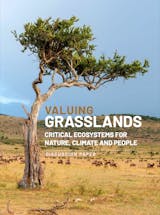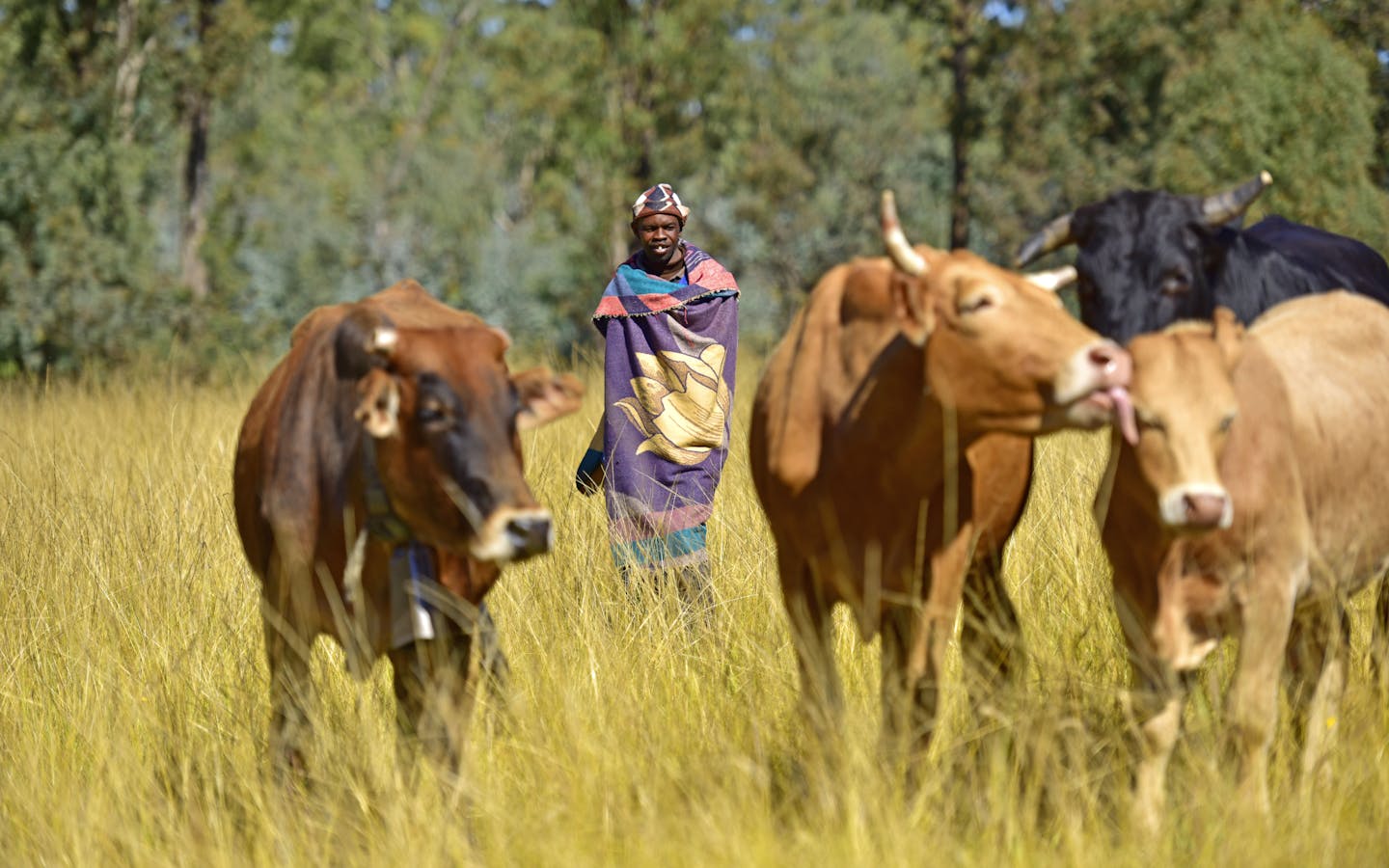The vast and highly biodiverse savannas, grasslands and shrublands of southern Africa are crucial for people and nature. They support more than 50 million Indigenous and local pastoralists, offer habitats for iconic wildlife and store large quantities of planet-warming carbon.
But half of Africa’s native rangelands are degraded due to encroaching settlements, land tenure policies, climate change and overgrazing. As a result, land degradation and the loss of wildlife are on the rise.
Our solution
The Herding for Health program — a partnership between Conservation International and the Peace Parks Foundation — is a community-driven livestock management model that supports the livelihoods of rural communities living in and around protected areas — while restoring rangelands and conserving biodiversity through herding, capacity building and collective governance.
Herding for Health is underpinned by four key pillars:
- Thriving people
- Healthy rangelands
- Healthy animals
- A strong enabling policy environment
The program champions community-driven participation, sustainable native rangeland management, integrated disease risk and food safety control, and rural development principles.
One of the key mechanisms in implementing Herding for Health is the voluntary stewardship agreements signed with communities that are custodians of the land. Pastoralist communities voluntarily commit to implementing planned grazing of their livestock to minimize overgrazing, remove invasive vegetation that hampers grass growth and water availability, and adopt wildlife-friendly practices, among other measures. In turn, they receive support to improve the quality of their livestock, reduce animal losses from wildlife predators and diseases, and access facilitated livestock markets, among other benefits.
The Herding for Health model has been successfully tested across all key rangeland ecosystems (semi-arid shrublands, mountain grasslands, and subtropical savannas) and is now being applied to restore and improve the management of 7 million hectares (17 million acres) of rangelands across seven countries in Africa, supported by US$ 150 million in site-based investments.
Our approach
better livestock management in Africa’s rangelands through combined herding, planned grazing and strategic kraaling (using mobile enclosures).
herders to effectively implement strategic livestock herding and kraaling.
market readiness and support development of value-chains to sustain stewardship actions.
knowledge-sharing, partner access, and adoption of innovative technologies.
community governance structures. Co-develop and sign site-specific stewardship agreements with communities.
systems to monitor impact (rangelands, wildlife, livestock, and human well-being).

Our vision
To enable the co-existence of people and nature in and around protected areas.
Our mission
To restore rangelands, improve animal health and provide market access — while promoting biodiversity conservation in and around protected areas in Africa.
Herding for Health sites
South Africa
- Namaqualand
- Eastern Cape
- Kruger to Canyons
Mozambique
- Maputo National Park
- Limpopo National Park
- Banhine National Park
Madagascar
- Atsimo-Andrefana Region
Zimbabwe
- Maramani
Botswana
- Bobirwa
- Kgalagadi District
- Ngamiland
- Habu
- Eretsha
Zambia
- Simalaha Community Conservancy
Kenya
- Mara
- Chyulu Hills
Resources

Valuing Grasslands: Critical Ecosystems for Nature, Climate and People
Our roadmap to 2030:
- 7 million hectares (17 million acres) under Herding for Health management by 2027
- 3.5 million direct and indirect beneficiaries
- 10,000 people accessing nature-positive jobs
- 20,000 farmers accessing markets
- 7 million tons of greenhouse gases removed from the atmosphere.

